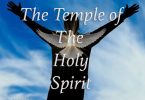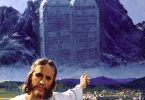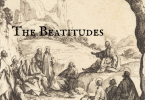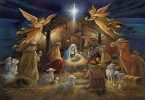
Theme: Jesus reveals his sacramental grace in his first visit to the temple.
Scriptures: Malachi 3:1-4; Ps. 23:7-10, Heb. 2:14-18; Lk. 2:22-40
The church today commemorates the feast of the presentation of the Lord. It is celebrated on the 40th day from the solemnity of Christmas. This feast has multiple names. It is called the feast of Encounter in the Greek Orthodox church; because on this day, Simeon and Anna who represented the Old Testament met the Lord. This feast is also called the epiphany where the Baby Jesus was revealed as the messiah, the light of the word and salvation of Israel to Simeon and Anna. It is also commemoration of presentation of Jesus in the temple and purification of Blessed virgin Mary after childbirth in according to Mosaic law. It is also called feast of Candlemas. The blessings and procession of candles on this day acknowledge Christ as the light of the world. The church also dedicates this day as a day of consecrated life. It is a great feast of all the religious men and women. It is the day, when the crèche in St. Peter’s in Rome is removed to mark the end of Christmas season.
There are many things in which we remember the presentation of the Lord. While praying the holy rosary, it is the fourth joyful mystery. All the priests and religious recite the canticle of Simeon “Nunc Dimittis” at every night prayers. As a matter of fact, the Lutherans sing it at the end of their liturgical services. The iconography of Our Lady of Sorrows or Our Lady of Dolours with seven spears in heart and the Immaculate Heart of Mary with one spear is inspired by this biblical text. Simeon told Blessed Mother that “a sword will pierce your own soul too”. All these names, meanings and symbolisms behind this feast, invite us to understand its theological importance in our Catholic faith.
I shall dwell on only one importance although we can draw many inspirations. The presentation of Jesus in the temple was the fulfilment of prophecy by Prophet Malachi. Malachi was one of the last prophets of the Old Testament in the Jewish prophetic history. He lived 460-450 years before Christ. He lived before the restoration initiated by Nehemiah and Ezra. No one paid much attention to him. He faced issues related to the priesthood and the sacrifices in the temple. To name a few; the people offered unfit sacrifices that showed general attitude in their worship. There was no fire of devotion in their worship. (Mal. 1:12), the priests offered lame, sick and blind animals in their sacrifice as a violation of the law (Lev. 22) Prophet warned them that the Lord rejected their worship. (Mal.1:10). Priests taught laws with partiality (Mal. 2:7-9). They twisted laws to gain their benefits. In such historical settings, Prophet Malachi made several prophecies. Four prophecies are recorded in today’s first reading. Firstly, God will send messenger to prepare the way. Secondly, the Lord whom you seek will suddenly come to his temple. Thirdly, he will purify the sons of Levi (priests). Fourthly, he will make offerings of Judah and Jerusalem pleasing to the Lord as in the days of old. All these prophecies were fulfilled in Jesus Christ.
Simeon and Anna who belonged to Old Testament witnessed the fulfilment of Malachi’s prophecy. They were the representatives of the Old Testament, old sacrifice and old priesthood. The scripture says, Simeon was upright and devout man. He looked forward for the restoration of Israel. The Holy Spirit was upon him. Anna was another person. She never left temple. She fasted and prayed day and night. She looked forward for the deliverance of Jerusalem. Both of them were waiting for the Lord. They recognise the deliverance of Israel/Jerusalem in baby Jesus. When Jesus entered in the temple, he renewed everything in it. God really entered into the temple which was made profane. He renewed the priesthood, the sacrifice, the symbolism, the rituals, everything. He renewed the temple.
Our faith teaches us that the Lord himself is here in the temple, in our church. He is present in the most Holy Sacrament. He is in the Word that we proclaim. He is in the breaking of bread. He is the gathering of all the faithful. He is in our worship/singing. We are also taught that our bodies are the temple of the Holy Spirit. Each one of are the living stones that make the temple of God i.e. church. We are made aware that God is present in our midst. This makes aware that our God is not limited to particular place. He is everywhere.
Jesus wanted us to live among us forever. He did it by instituting two beautiful sacraments i.e. the Most Holy Eucharist and the Holy Priesthood during the last supper. Jesus transformed the old sacrifice and the old priesthood by his death and resurrection. He became the victim, the altar and the priest. A writer of Hebrew letter emphasizes that Jesus is eternal high priest of new covenant. He has experienced all the sufferings of whole humanity. At every Eucharist in the whole world, we offer sacrifice pleasing to God because Jesus is the one who offers that sacrifice.
Coming of Jesus in the temple to meet Simeon and Anna was the fulfilment of Prophet Malachi’s prophecy. But it also was the beginning of bringing salvation through the sacramental life in the church. The feast of presentation of the Lord help us to realise that the Lord has come into our midst. The Eucharist is the pleasing sacrifice offered to God. Jesus is the High priest who offers this sacrifice to God.
Let us pray! May we prepare ourselves for this sacrifice every time with sincere hearts like Simeon and Anna. May our Catholic parents learn from the Holy Family of Nazareth to pass faith to their children as a sacred tradition. May every priest of the catholic church recognise his duties to enfold the mysteries of Christ.






